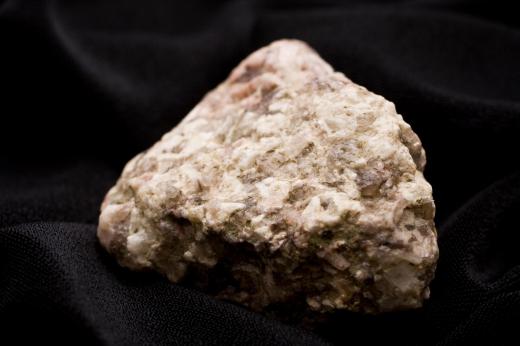What are the Properties of Minerals?
 Diane Goettel
Diane Goettel
There are a number of properties that are used to identify and define minerals, but the most recognizable properties and the ones that are also most commonly used include color, hardness, luster, streak, crystalline structure, and cleavage. Other properties that are sometimes used include odor, taste, and magnetism. There are a number of minerals that are very similar if not identical when profiled according to the first list of properties. In these cases, other kinds of properties must be used to distinguish them. There are a number of minerals that seem, to the naked eye, to be almost identical. Such is the case with gold and pyrite, which is also known as "fools gold," which can be identified by testing properties of the minerals that are not apparent to the naked eye.
Some of the first properties of minerals that are used to identify minerals are color, luster, and hardness. These are all properties that can be tested with little to no equipment. Color is something that can be easily assessed by simply looking at the mineral and comparing it to the color of other minerals. Luster refers to the ability of a mineral to reflect light. A dull mineral, for example, has very little luster whereas a shiny mineral such as hematite has a nearly mirror-like luster.

Hardness can be tested by applying pressure to the mineral. Hardness is one of the properties of minerals that can be assessed according to an established scale, the Mohs scale. The Mohs scale ranges from one to 10, talc being calculated as a one and the diamond being calculated as a 10. This scale assesses how difficult it is to scratch the surface of a mineral.

Crystalline structure is one of the properties of minerals that describes the makeup of the mineral both on a molecular level and on a larger scale that is visible to the naked eye. The crystalline structure of a mineral defines the way that the atoms, ions, or molecules are arranged and joined. It is also responsible for the shape that the crystal takes as it forms.
Other properties of minerals include tenacity, transparency, diaphaneity, and specific gravity. All of the properties of minerals have various ways of being tested and assessed. Some of these methods, as described above, are rather simple. There are others that are quite complex and require one or more pieces of specialized equipment.
AS FEATURED ON:
AS FEATURED ON:












Discuss this Article
Post your comments